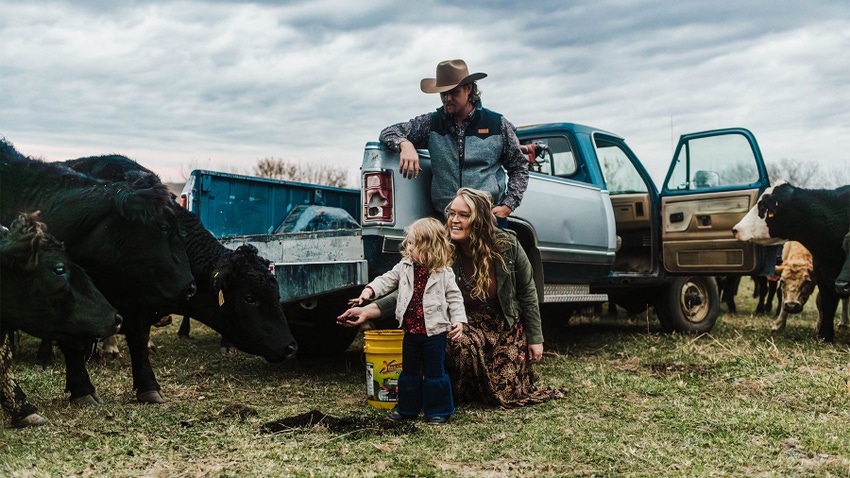February 8, 2024

At a Glance
- At a 2024 Cattle Industry Convention workshop, government programs were suggested as a tool in the cattle producer’s toolbox.
- Producers on both sides of the aisle debated the place of government funding on America’s farms and ranches.
- Analyst says public policy engagement is more important than ever to help shape government programs that benefit agriculture.
We’ve all heard the Ronald Reagan quote, “The nine most terrifying words in the English language are: ‘I’m from the government, and I’m here to help.’”
It’s been nearly 40 years since Reagan said that, and the sentiment still holds true — particularly for farmers and ranchers, who generally view the government as a necessary evil. But what about government programs?
Last week I attended the Cattle Industry Convention in Orlando, Fla., where cattle producers from across the country gathered to shape policy and checkoff discussions, learn from industry experts, and network with other producers. I was reminded why farmers and ranchers are some of favorite people. They’re fiercely independent and entrepreneurial, and hold firmly to their beliefs.
During a workshop, government programs were suggested as an underutilized tool in a cattle producer’s toolbox. And man, did that statement spark controversy. Soon, discussions erupted across the table on the good, bad and ugly of federal funding.
Opposing views
On one side of the table sat a Missouri rancher who is adamantly opposed to government programs and subsidies.
“The whole USDA system needs overhauled and reevaluated. We’ve lost touch with why these farm programs were created,” the rancher said. “We need to spend funds wiser by helping young farmers get started, instead of throwing money at the same farmers and ranchers who have benefited from the system for years.”
He went on to explain that a Farmers Home Administration loan helped him and his wife purchase their first farm together in the mid-1970s. “That loan was the reason we were able to start farming,” he said.
As the rancher became more financially stable, he said he felt a civic duty to wean himself from government payments — and wished others felt the same way.
“Farmers are quick to criticize urban folks and businesses for taking government assistance, but don’t look in the mirror and see that they’re benefiting from the same subsidies,” he said. “My problem is that in my county, 25 names receive 80% of the subsidies — and that’s wrong.”
He poses some great points. Has the ag industry become too reliant on federal subsidies? Are federal funds going to the farmers and ranchers who really need them? Are we inching toward socialism?
I can say from firsthand experience how challenging it is to be a young farmer. Market volatility, income uncertainty and out-of-control land prices have created an environment that’s nearly impossible for young people to buy land. The Farm Service Agency’s Beginning Farmers and Ranchers Loan helped my husband and me purchase our first farm in 2018, and for that, I’m so thankful.
We’ve also used programs like crop insurance, the Conservation Reserve Program, the Market Facilitation Program and the Paycheck Protection Program. I can’t say that I necessarily feel good about taking federal funds, but rejecting government payments would put us at a disadvantage to others who do accept them.
On the other side of the table sat Sarah Luther of Waldo, Fla. Luther and her husband recently purchased land to expand their Angus-Wagyu herd.
Luther said that government assistance is necessary to help protect their local water resources. With Luther’s age as a young rancher, her husband’s veteran status and their wetland conservation measures, she said she qualifies for several government programs.
“We both work full-time jobs, and my husband is about to be deployed,” she explained. “I don’t have the time or money to put in miles of fence alone.”
However, Luther has become frustrated with the application process and lack of guidance from the Natural Resources Conservation Service.
“Trying to find someone who can really explain the step-by-step process has been a challenge,” she said, “because NCRS staff are time- and resource-constrained.”
Analyst perspective
Lance Zimmerman, senior beef and cattle market research analyst at Rabo AgriFinance, said if farmers and ranchers want to use government programs, it’s important to engage in public policy discussions.
“The reality is, the government is more involved in all of our lives every day,” Zimmerman said. “If you’re using these programs and they’re not working as they should, don’t just complain. Go talk to your elected officials and work toward a solution that benefits your operation.”
Zimmerman added that some producers may be able to navigate the increased volatility of today’s market conditions without help, but for others, government programs provide an opportunity to stay competitive during challenging times.
“With the price volatility and climate volatility that we’re exposed to today, you need to look at ways to protect yourself from some of that risk,” he said. “It’s clear that production and price risk are much more elevated in production agriculture than 10 or 20 years ago.”
He also argued that participating in government programs isn’t inherently socialist, as some suggest.
“I don’t think it changes your capitalistic spirit if you’re a farmer who participates in crop insurance or doesn’t, but it does change your behavior,” he explained. “It doesn’t change your motivations for profitability or your entrepreneurship, but it does change your risk appetite.”
Yet, as sustainability and emissions targets take hold across the world, the U.S. has remained a stronghold for voluntary program participation.
“If we look at USDA’s climate-smart commodities program, their intentions were pretty novel,” Zimmerman said. “They recognized Europe and other countries around the globe developing very heavy-handed ‘do this or else’ targets on reducing carbon emissions. The USDA’s climate-smart grants are a carrot rather than stick approach, where producers are rewarded for efforts instead of penalized for not complying.”
What do you think of government programs? Email [email protected].
About the Author(s)
You May Also Like






